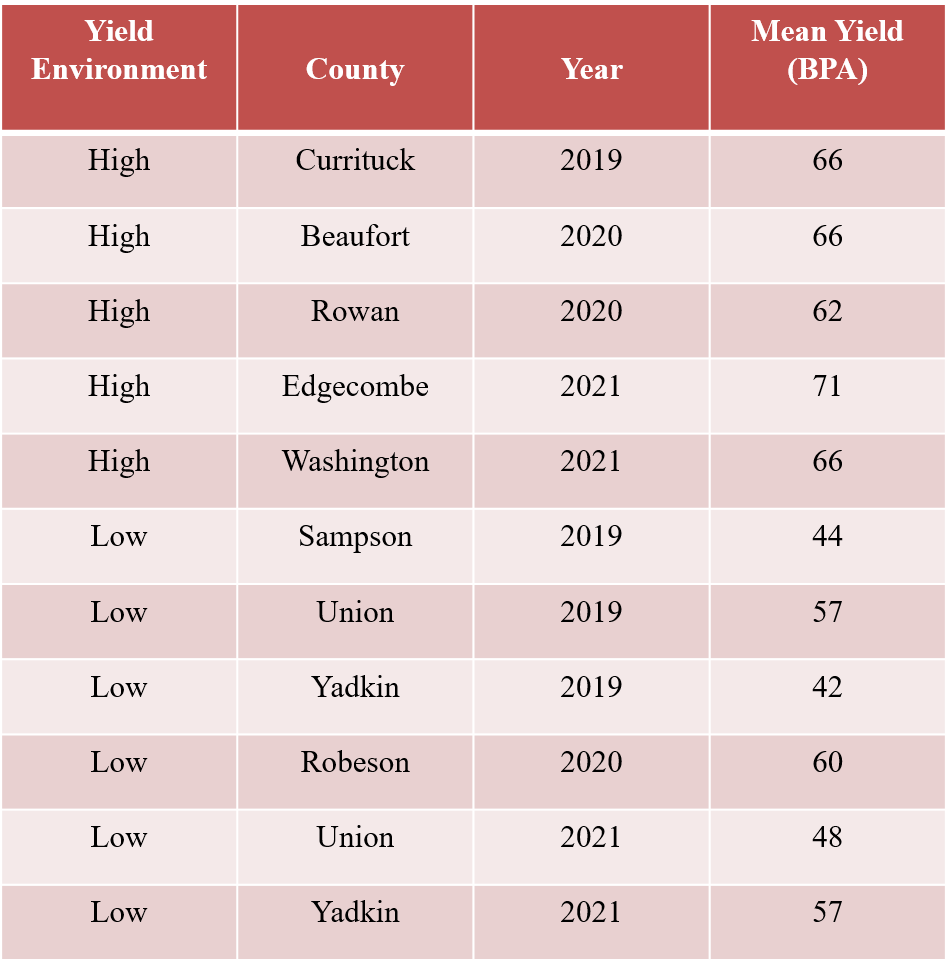Research Update: Soybean Planting Date and Maturity Group Impact on NC Soybean Yield
go.ncsu.edu/readext?849449
en Español / em Português
El inglés es el idioma de control de esta página. En la medida en que haya algún conflicto entre la traducción al inglés y la traducción, el inglés prevalece.
Al hacer clic en el enlace de traducción se activa un servicio de traducción gratuito para convertir la página al español. Al igual que con cualquier traducción por Internet, la conversión no es sensible al contexto y puede que no traduzca el texto en su significado original. NC State Extension no garantiza la exactitud del texto traducido. Por favor, tenga en cuenta que algunas aplicaciones y/o servicios pueden no funcionar como se espera cuando se traducen.
Português
Inglês é o idioma de controle desta página. Na medida que haja algum conflito entre o texto original em Inglês e a tradução, o Inglês prevalece.
Ao clicar no link de tradução, um serviço gratuito de tradução será ativado para converter a página para o Português. Como em qualquer tradução pela internet, a conversão não é sensivel ao contexto e pode não ocorrer a tradução para o significado orginal. O serviço de Extensão da Carolina do Norte (NC State Extension) não garante a exatidão do texto traduzido. Por favor, observe que algumas funções ou serviços podem não funcionar como esperado após a tradução.
English
English is the controlling language of this page. To the extent there is any conflict between the English text and the translation, English controls.
Clicking on the translation link activates a free translation service to convert the page to Spanish. As with any Internet translation, the conversion is not context-sensitive and may not translate the text to its original meaning. NC State Extension does not guarantee the accuracy of the translated text. Please note that some applications and/or services may not function as expected when translated.
Collapse ▲Soybean planting date and maturity group (MG) are important management considerations for soybean production in North Carolina. A recent analysis of 877 North Carolina soybean yield contest entries from 2002-2019 indicated that planting before mid-May and using maturity groups ≤4 increases yield in high yielding situations. Further investigation into the impact of these management strategies on yield across more diverse production environments is important, as most of our fields in this state encounter more stress than would an entry into the NC Soybean Yield Contest.
The NC Soybean Extension program has been investigating the impact of planting date and maturity group on soybean emergence, flowering, yield, seed damage, purple seed stain, protein, and oil for the past 3 years (2019-2021). In each environment, we have evaluated maturity groups 2-7 at planting dates from mid-March through mid-July. More details about the methods used in this study can be obtained in this scientific publication.
This research will continue in 2022 and 2023 with the ultimate goal of creating a grower decision support tool that will allow growers to enter their planting date and the tool will generate a prediction on the best maturity group and seeding rate combination to use at that planting date. We would like to have enough data so that growers could filter in the tool by things like yield environment, location, soil type, and latitude. In order to create a tool that is robust, data must be captured that represents different weather patterns, geographical locations in NC, soil types, and latitudes.
Our current dataset has 11 environments across North Carolina from 2019-2021 (Table 1). Working with a statistician and scouting the trends across individual environments, we have pooled the data into high and low yield environments (Figure 1). High yield environments have a site average >60 bu/A.
Planting Date: In high yield environments, yields were typically highest with early to mid May planting for most maturity groups (Figure 1). Yields were slightly lower both when planting before May and in late May compared to planting in early to mid May. Yield declined considerably when planting dates were pushed past May across all maturity groups (Figure 1).
In low yield environments, yields were highest for MG3-5 when planted in mid to late May and yields were similar with late April to late May planting for MG6-7 (Figure 1). Considerable yield declines were observed when planting before mid-April and after mid-June at these environments (Figure 1). Yield declines from planting before mid-April at these environments are not well understood but may be attributed to soil type interactions with cooler weather limiting vegetative growth prior to soybeans moving into reproductive development and seed damage encountered at earlier planting dates. Yield declines at planting dates past May are expected and well documented in the literature.
Maturity group: Planting date and maturity group interact to affect soybean yield, meaning that the same MG is not the best across all planting dates. In high yield environments, MG4 and MG5 yielded highest when planted before May (Figure 1). In lower yield environments, MG6 yielded the highest when planted before May (Figure 1). At full season planting dates in May, MG5 and MG6 tended to provide the highest yields regardless of yield environment (Figure 1). At planting dates past May, our data so far indicates that growers have flexibility in using MG4-7 regardless of yield environment (Figure 1).
This research continues in an effort to understand the impact of environment characteristics (weather, soil type, latitude, yield environment) on soybean yield so that robust recommendations can be made about maturity group use across planting dates.




